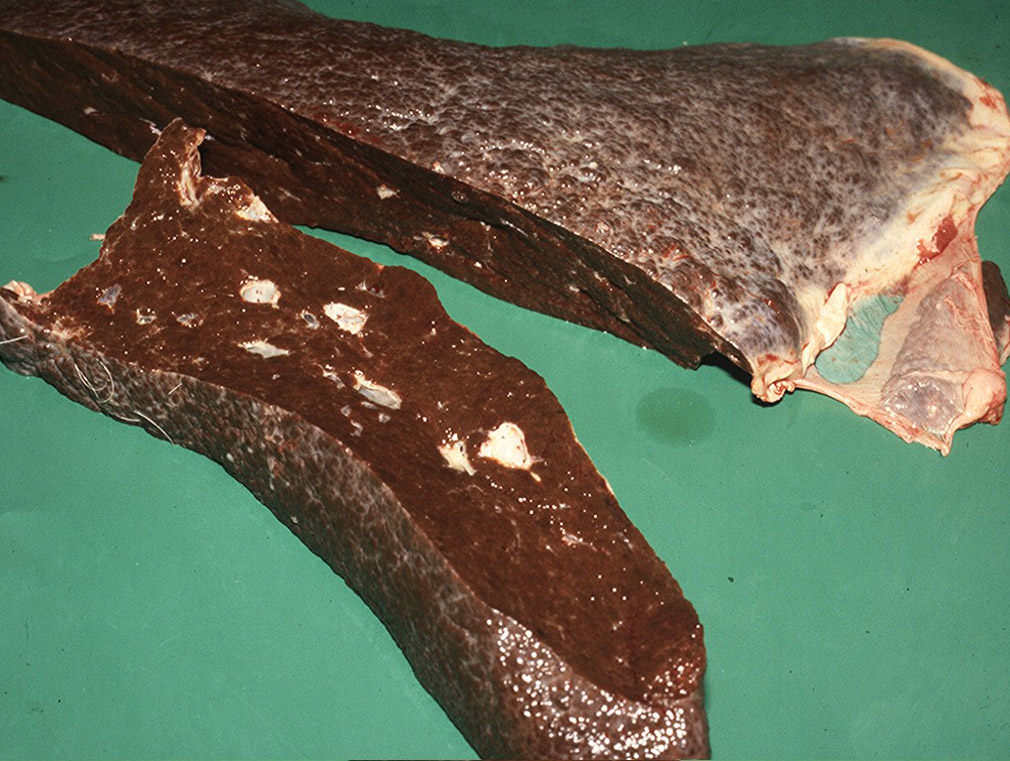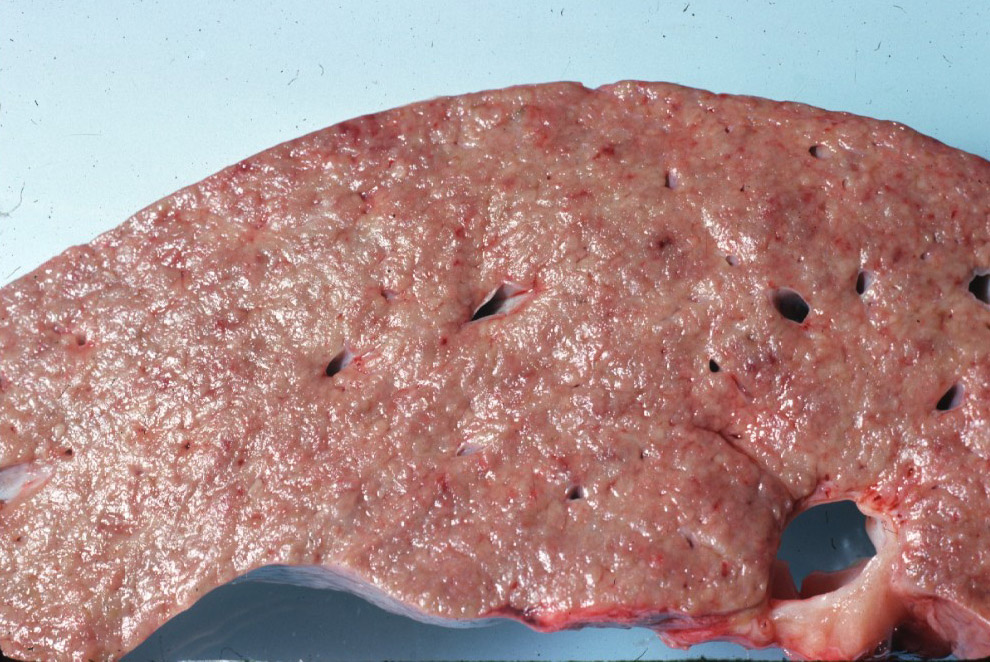




Today’s path rounds are on 𝐫𝐚𝐠𝐰𝐨𝐫𝐭 𝐭𝐨𝐱𝐢𝐜𝐢𝐭𝐲!
𝐖𝐡𝐚𝐭 𝐢𝐬 𝐢𝐭?
𝐑𝐚𝐠𝐰𝐨𝐫𝐭 plants contain the toxin 𝐩𝐲𝐫𝐫𝐨𝐥𝐢𝐳𝐢𝐝𝐢𝐧𝐞, which causes liver damage. Other plant species that contain this toxin include 𝐂𝐫𝐨𝐭𝐚𝐥𝐚𝐫𝐢𝐚 (rattleweed) and 𝐀𝐦𝐬𝐢𝐧𝐜𝐤𝐢𝐚 (tarweed).
𝐖𝐡𝐨 𝐠𝐞𝐭𝐬 𝐢𝐭?
This disease can affect cattle, deer and pigs, however we most commonly think of it affecting horses!
𝐖𝐡𝐚𝐭 𝐜𝐚𝐮𝐬𝐞𝐬 𝐢𝐭?
All parts of the plant, including the seeds, contain the toxin. Thankfully, these plants are generally not very tasty, so animals will not seek them out to snack on. However, they may get incorporated into feed like hay cubes, which prevents the animal from picking around the gross plant. In cases of 𝐨𝐯𝐞𝐫𝐠𝐫𝐚𝐳𝐢𝐧𝐠, these plants may be the only thing left to eat, leading to their consumption. After ingestion, the toxin is absorbed and acts on the liver, causing 𝐧𝐞𝐜𝐫𝐨𝐬𝐢𝐬 (cell death).
𝐖𝐡𝐲 𝐢𝐬 𝐭𝐡𝐢𝐬 𝐚 𝐩𝐫𝐨𝐛𝐥𝐞𝐦?
Cell death in the liver isn’t generally an issue, since it is a very large organ with a lot of cells that can pick up the slack. However, these necrotic areas tend to heal by 𝐟𝐢𝐛𝐫𝐨𝐬𝐢𝐬 (forming scar tissue), meaning that the capacity of the liver will decrease. With repeated exposure to the toxin, the animal may enter liver failure. These animals develop neurological signs like 𝐚𝐭𝐚𝐱𝐢𝐚 (wobbly gait), aggressive behaviour or aimless wandering, because the liver will no longer be able to remove 𝐚𝐦𝐦𝐨𝐧𝐢𝐚 in the bloodstream. Eventually, the animal may enter a coma and subsequently die.
𝐅𝐮𝐧 𝐟𝐚𝐜𝐭!
Pyrrolizidine toxin is actually quite interesting, because it can bind to the DNA of the 𝐡𝐞𝐩𝐚𝐭𝐨𝐜𝐲𝐭𝐞𝐬 (liver cells) and prevent 𝐦𝐢𝐭𝐨𝐬𝐢𝐬 (splitting of the cell into two). So, these cells continue to produce new materials for forming another cell, however they are unable to actually split into two cells. This produces 𝐦𝐞𝐠𝐚𝐥𝐨𝐜𝐲𝐭𝐨𝐬𝐢𝐬 (really big cells!) which is characteristic of this toxicity.
𝐇𝐨𝐰 𝐢𝐬 𝐢𝐭 𝐝𝐢𝐚𝐠𝐧𝐨𝐬𝐞𝐝?
Diagnosis can be difficult if there is no history of exposure to these types of plants. However, the clinical signs of liver failure and corresponding findings on bloodwork can give the veterinarian a clue! Ultrasound of the liver might also show extensive fibrosis, which may support the diagnosis.
𝐇𝐨𝐰 𝐢𝐬 𝐢𝐭 𝐭𝐫𝐞𝐚𝐭𝐞𝐝?
Unfortunately, animals rarely recover from this disease, even if they are prevented from eating the toxic plant. Like other types of scar tissue, once the liver has become fibrotic, it is nearly impossible to recover from that state!
𝐏𝐡𝐨𝐭𝐨𝐬
1) The ragwort plant.
2) A lumpy, fibrotic liver from a horse.
3) Another fibrotic liver. Normally, the liver is a dark brown colour, but this one is so scarred it’s turned pale tan!
4-5) Examples of megalocytosis in the liver.
𝐒𝐨𝐮𝐫𝐜𝐞𝐬
Maxie, G. Jubb, Kennedy and Palmer’s Pathology of Domestic Animals, Volume 2. Sixth Edition.
Bildfell R. Pyrrolizidine alkaloidosis in animals. Merck Veterinary Manual 2022.
Photos 1-5 © Noah’s Arkive contributors Rech, Rimoldi, King, Clarke, Saunders licensed under CC BY-SA 4.0.




